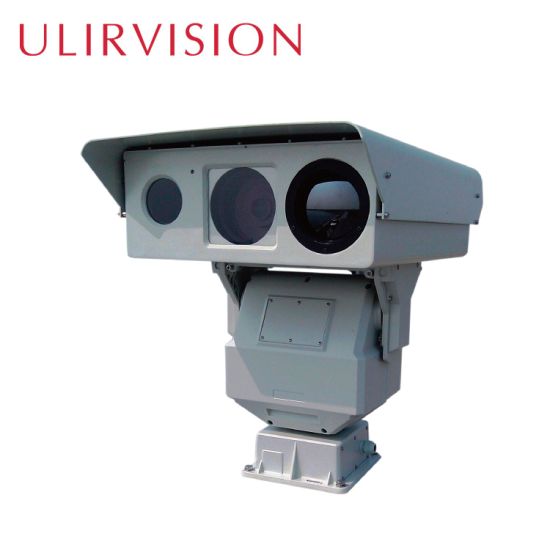Border Monitoring Surveillance Thermal PTZ Camera 4 to 5 km,
Border Monitoring Surveillance Thermal PTZ Camera 4 to 5 km,
A Border Monitoring Surveillance Thermal PTZ Camera with a range of 4 to 5 kilometers typically refers to a specialized camera system designed for long-range surveillance in border security applications.
Here are some key features and considerations for such a system:
Thermal Imaging : Thermal PTZ cameras use thermal imaging technology, allowing them to detect and capture heat signatures. This makes them effective for day and night surveillance, as they can operate in total darkness and challenging weather conditions.
Pan-Tilt-Zoom (PTZ) Functionality : The PTZ capability enables the camera to pan (rotate horizontally), tilt (angle vertically), and zoom in on specific areas of interest. This flexibility is crucial for monitoring a large and dynamic border area.
Long Range : A range of 4 to 5 kilometers indicates the camera’s capability to capture detailed images and video over a considerable distance. The zoom feature is particularly important for identifying objects or individuals at such distances.
Optical Zoom : The camera likely features an optical zoom lens that allows for magnification without sacrificing image quality. Optical zoom is essential for capturing details at long distances.
Integrated Thermal and Visible Cameras : Some advanced models may integrate both thermal and visible light cameras. Visible cameras provide color images for daylight conditions, while thermal cameras excel in low-light or no-light scenarios.
Image Stabilization : To counteract vibrations or movements, image stabilization technology may be incorporated to ensure clear and stable footage, especially when using high levels of zoom.
Weatherproof and Durable : Border surveillance cameras are often installed in outdoor environments, so they should be weatherproof and capable of withstanding harsh conditions like rain, snow, and extreme temperatures.
Network Connectivity : These cameras are likely network-enabled for remote monitoring and control. They can be integrated into a larger surveillance network, allowing operators to access the live feed and recorded footage from a central location.
Intelligent Analytics : Some cameras may come equipped with intelligent analytics features such as motion detection, intrusion detection, and facial recognition. These features enhance the camera’s ability to detect and alert operators to potential security threats.
Integration with Command and Control Systems : These cameras are often part of a broader security system and may be integrated with command and control centers. This integration enables seamless coordination of surveillance efforts and rapid response to detected incidents.
Power Supply : Depending on the installation location, the camera may be powered by conventional electrical sources or utilize Power over Ethernet (PoE) for easier installation in remote areas.

Implementing a border monitoring surveillance system involves strategic placement of these cameras along the border to provide comprehensive coverage. Additionally, the integration of thermal technology enhances the system’s effectiveness, particularly during nighttime operations or low-visibility conditions.
